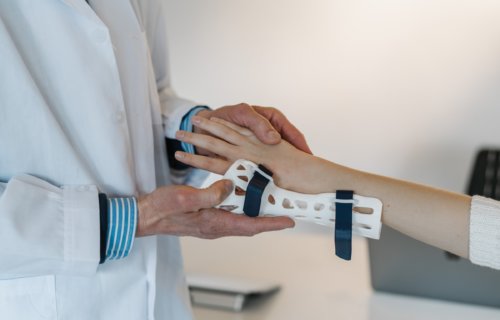DETROIT, Mich. — Whoever said office workers have an easier job may have been on to something. Despite carpal tunnel syndrome having a reputation of mainly causing office workers and frequent keyboard users great discomfort, a new study finds laborers actually suffer from the condition more often. Researchers with the Henry Ford Health System say doctors typically see more carpal tunnel cases among construction workers and other manufacturing employees.
Carpal tunnel syndrome results from pressure building along the median nerve in the wrist. The actual carpal tunnel is a narrow route surrounded by bones and ligaments on the palm side of the hand. Compressing the median nerve in this channel leads to numbness, tingling, and weakness. This tends to explain why the injury has such a well established association with typists.
However, Dr. Charles Day reveals manual laborers with jobs that require lifting, gripping, and forceful wrist motions get carpal tunnel at higher rates than keyboard users.
“This study is an important reminder that carpal tunnel is a primary contributor to hand and upper extremity pain in both the clerical and manufacturing work places, and that ergonomic conditions for workers in both industries should be equally considered,” says Day, Executive Vice Chair and Chief of Hand & Upper Extremity Surgery of Henry Ford’s Department of Orthopedic Surgery, in a media release.
Carpal tunnel syndrome can be a costly injury
Researchers add carpal tunnel cases have actually declined recently, going from 1.3 million in 2003 to 900,380 in 2018. Day notes he typically consults with 10 to 15 CTS patients every week. The study’s lead investigator also performs four to five minimally invasive endoscopic carpal tunnel surgeries weekly as well.
The fact that CTS impacts both office workers and laborers is bad news for employers everywhere. Study authors find the typical CTS case will cost society between $47,000 and $119,000. That figure includes the expenses coming from healthcare costs, reduced productivity, and missed work due to injury. Researchers even factored in the losses in income patients face from changing careers due to their carpal tunnel syndrome.
For employers and insurance companies, the bill for workers dealing with CTS soar into the billions. The study estimates that carpal tunnel medical care costs over $2 billion each year. Most of that comes from surgery costs and mental or psychological health treatments for the workers.
Who else can the condition affect?
Dr. Day finds there are several activities to look out for that can increase CTS risk. These include repetitive finger use and motions such as high-force hammering, extreme wrist actions, and vibrations. Severe cases can lead to extreme night pain and loss of motor function in the hand.
Although CTS is a common workplace injury, patients with diabetes, thyroid dysfunction, and fluid retention from pregnancy or menopause can develop CTS. Those with autoimmune disorders like rheumatoid arthritis and people suffering wrist fractures or trauma are also at risk. Even playing sports, like in the case of star MLB pitcher Stephen Strasburg, can cause carpal tunnel.
To avoid surgery, Day recommends reducing or avoiding repetitive motions that can lead to CTS worsening. Unfortunately for some, that simply won’t be possible in their line of work.
Researchers say patients should opt for carpal tunnel surgery when their pain becomes severe and non-surgical treatments fail. The procedure enlarges the size of the tunnel, leading to less pressure on the nerve inside. Surgeons do this by cutting the transverse carpal ligament which covers the tunnel at the base of the palm.
The study appears in the Journal of Occupational and Environmental Medicine.
